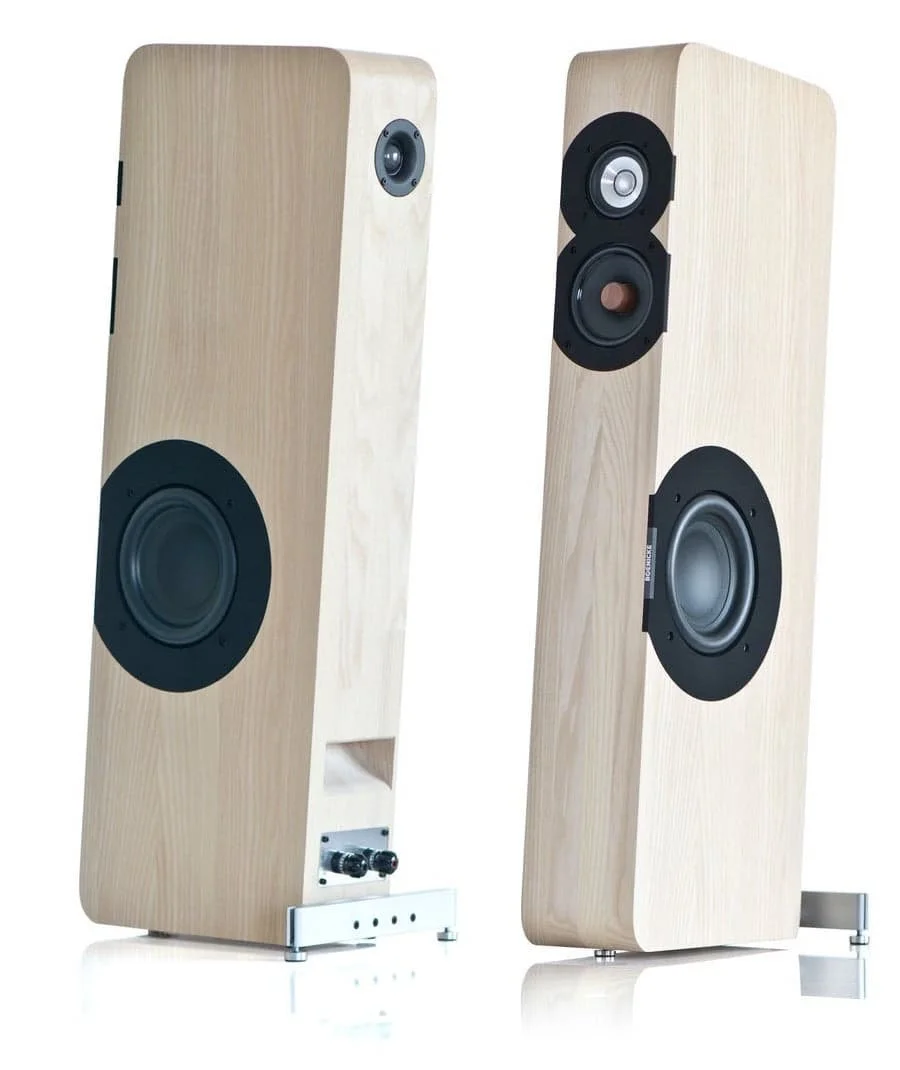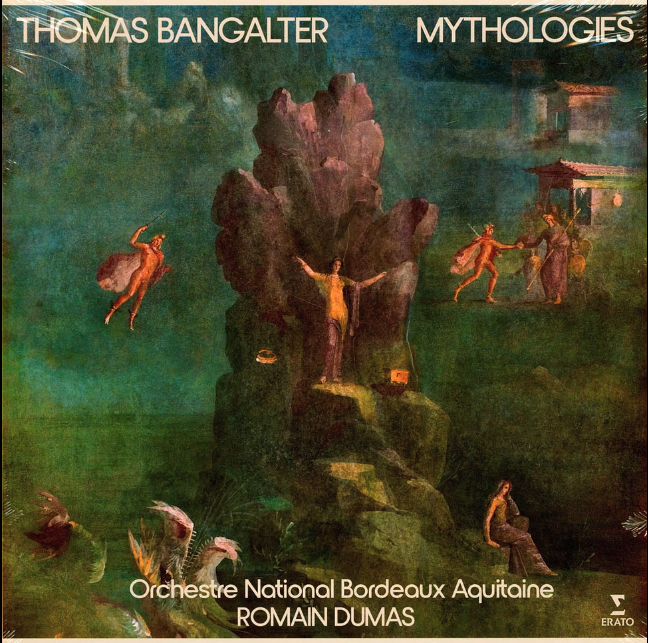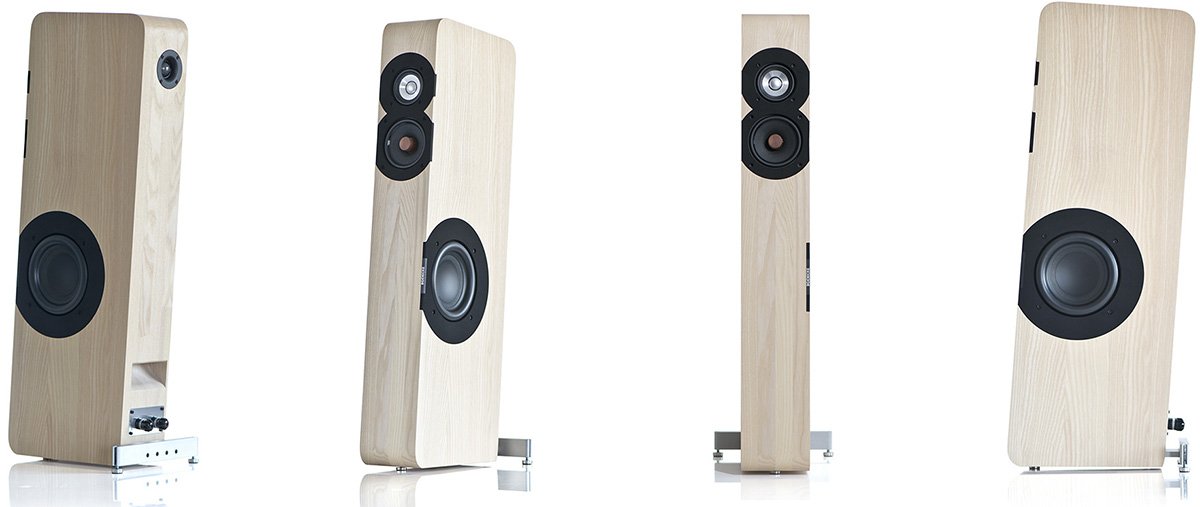BOENICKE AUDIO W8 - REVIEW
BOENICKE AUDIO W8
Looks can be deceiving. This is especially true of loudspeakers and traditional power amplifiers, as both tend to broadcast their designer’s intent through unconcealed physicality. Take, for example, the absurdly overbearing designs of larger Wilson speakers or the hollow state wet dream that is Atma-Sphere’s MA-3. Recently, I was presented with a delightful conundrum that exploded both my expectation bias and my concept of what the platonic ideal of “small speaker” can achieve. The topic of this month’s review is a floor stander. Not just any floor stander, but one that, with its diminutive proportions and heretical tech, manages to outperform far larger models from other more hidebound companies.
Sven Boenicke is a relatively young man, a citizen of that iconic land of cows, chocolate, the Red Cross, and precision machinery. That would be the Swiss Confederation, aka Switzerland, where Boenicke Audio manufactures five solid wood models of speaker. He also directs an audiophile record label, B:THERE RECORDS, which employs a cost-no-object signal chain. A handful of custom microphones feed DC-coupled, custom Audio Consulting preamplifiers, which are, as Boenicke opines, “…considered (to be) one of the most transparent and the fastest on the planet, using a minimum amount of parts, and those parts are simply the fanciest available.” That ultraclean signal feeds a custom solid state Windows–based DAW (recorder) at 88.2kHz sample rate and 24 bits.
The aside about “…simply the fanciest available” is telling. This is Boenicke’s approach to everything he does; uncompromising devotion to fidelity, no matter what it takes. His phase plugs are wood, his drivers custom and box internals labyrinthine, and his optional suspension system is at once brilliant, effective, and elegantly simple in design and execution. The speaker’s driver complement consists of a side-mounted 6.5" long throw bass driver, tuned to 28Hz and running wideband without a crossover, a 4" custom paper cone bass-midrange via a first-order low pass filter (no high pass) with an apple wood phase plug and a maple wood cone mounted to the magnet, and a 3" “wide bander” fed from a first-order high pass filter. The 3” and 4"drivers have their own enclosed space in the cabinet. A 1" soft dome tweeter wedded to a shallow flare waveguide sits on the back to enhance envelopment. Internal wiring is “orientation–optimized,” silk-wrapped stranded litz with quality WBT NextGen binding posts.
Boenicke Audio manufactures six models, from a very compact centre channel to the low but wide top-of-the-line W22. The W8 is the third-smallest and is available in solid wood species, from about $8,950 for ash or oak and a bit more for black oil finish, plus $9,100 for cherry and $9,470 for walnut. The loudspeakers arrived in one all-paper double-walled carton with each speaker in its own cloth bag. At 30 pounds per piece, it was fairly easy to pull them out of the box and get them set up all by myself, being careful not to touch that rear-firing fabric tweet. It was nice to see almost no synthetics in the packaging, a refreshing change from landfills full of oft broken expanded styrene and seemingly endless amounts of shrink wrap and plastic packing tape. After messing around with room placement, I ended up going with Sven’s suggestion of heavy toe-in so “…they cross slightly in front of you” and “…with as much air behind the speakers as possible.” Not quite a “giant headphones” placement, but much closer to my listening position than is normal for most speakers. An aspect of the W8 that may not be ideal in your listening space is their uneven frequency response in the vertical dimension when you are very close. Either you should situate the speakers well away from you or, if they are close by, you may need a low seat height. The speakers sounded best to me when my ears were approximately in line with the upper driver, some 26 or 27 inches from the floor. Remember the Memorex ad? My momma taught me not to slouch, so low-slung seating is key.
Connections consisted of ANTICABLES Level 3.1 to the speaker’s single set of luxe binding posts. For amplification, I used my Parasound JC 3 solid state stereo amp to avoid any colouration. Same goes for the sources; the Tubadour IV SE DAC from Audio Mirror and Mytek’s Liberty II DAC directly into the JC 3. With the W8, it was easy to hear the sonic signatures of each converter.
I started my listening with the gone but not forgotten John Winston Lennon, who would have been a crusty 83 this October. Qobuz reminded me of Lennon with a newly streaming version of Double Fantasy, which is, for me, a very challenging album. So instead I went back to 1971’s Imagine [96k Apple Corps, remastered 2010], an album I dearly love. With Klaus Voormann on bass, Jim Keltner on drums, Nicky Hopkins tickling the ivories, and Phil Spector plus Yoko overseeing the proceedings along with a host of famous musician friends, what’s not to like? The svelte W8s supplied the most precise yet expansive imaging and soundstage I have yet to experience in my living/listening room. Could it be a combination of their ultra-slim baffle, their rear-facing tweeter, and all around clever engineering? I think so.
The W8 is physically time-aligned by its baffle that’s angled away from the listener, but a discourse on the speaker’s stands is in order. There are two options, with both sharing a novel front footer. Toward the front of the cabinet, a shallowly dimpled bronze plate, about 2" in diameter, is inset into the butcher block-style laminated wood enclosure. Each speaker is supplied with another corresponding free standing plate and a small steel ball bearing. If you place the free plate on the floor and rest the ball bearing in the dimple, you can then slide that combination under the front of the speaker so the bearing lines up with the dimple in the recessed upper plate. Voilà! A single weight-bearing point of suspension in front. In back, you have the choice of two “outriggers.” The standard one is a basic arrangement where two height-adjustable felt-clad feet are mounted on a crossbar with perpendicularly-attached plate. The plate slides into a slot cut into the bottom back of the speaker. This results in a slightly atypical rigid three-point support. As a $1,640 option, you can purchase the eccentric and exceptional SwingBase, whereby the aforementioned plate, instead of being connected to a horizontal bar, is suspended by short and thin metal cables, which in turn hang from outboard footers. Along with the front ball bearing, this produces a devilishly simple three-point suspended support mechanism. Levelling is provided via an included hex key. Brilliant! However, the SwingBase presented a bit of a problem for me…my living room rug is made of thick wool, with a medium grey loop ground and tufted stripes and blobs of natural and pastel yellow yarn. The standout stripes and blobs stand proud of the background, which made it difficult to situate the flat-footed outriggers and dimpled front plate. Ikea to the rescue…their APTITLIG bamboo cutting boards to be precise, which evened out the height variations of the rug and provided a hard surface on which to place the speakers.
Wearing his soundtrack composer inclinations on his sleeve, French musician/producer Thomas Bangalter was born in 1975, the year before I dropped out of naval architecture school. This year, he released his Mythologies [Qobuz 96k Warner Classics], with the Orchestre National Bordeaux Aquitaine conducted by Romain Dumas. The entrée into the album, appropriately named Premiers Mouvements, rests on a “strings of tension” bed, with fatter strings, horns, and percussive elements slowly building, then diminishing, a repetitive ebb and flow of the simple leitmotif that reappears in track 13. Busy strings, double reeds, double bass, and supporting cast were all painted by the W8 with a light, nimble, and convincing brush. Track 13, Le Minotaure, employs all the weighty denizens of the orchestra. Despite their size, the speakers reached down into the middle 30s in my room when playing warble tones, which is no small feat—pun intended. Yes, they are not the last word in slam or LF ease like an open baffle, but they are also decidedly not one-note wonders or members of the Floppy Bass Club like many of their bass reflex brethren. Their low end is tight, ample, and well defined.
The Boenicke W8 is a bit ladylike in voice and is unable to either plumb the bottom octave or provide a close shave with an aggressive top. No, they proudly stand on that Goldilocks middle ground of clean low distortion and even-handed presentation that will satisfy all but the most bass-addicted. The high frequency response is smooth and extended, without a hint of bite or piercing shrillness. This is not the refulgent top of a cheap metal tweeter, nor is it darkly rolled off like a full ranger. As I said, Goldilocks. To gauge that HF response, I dug around in my jazz playlist to unearth Norwegian composer and virtuoso tuba and bass trumpet player Daniel Herskedal’s The Roc from his excellent multidimensional 2017 album by the same name [Qobuz 88.2k Edition Records]. Between the processed tuba, percussion, and piano, there’s plenty of high-frequency content captured by August Wanngren’s recording. The lip sounds and rasp of the tuba, the neck slap and finger noise of the bass, and the sharp transients of the piano and other percussive elements were all portrayed with smooth tactility by the W8. I did not wish for more top end, as everything was in its place and from bottom to top, every frequency was evenly and melodiously represented. Never once during my listening did I notice any discontinuity between one driver’s contribution and another.
As a final choice to assess the little wonders, I turned to another jazzy personal fave: Hoff Ensembles’ 2012 release of Quiet Winter Night. Since I had the Liberty II patched in, I disabled all DSP in Amarra Luxe and let the DAC completely unfold the 44.1 MQA file off my server to its innate 8x sample rate. The little blue LED illuminated on the DAC, indicating that I was indeed listening to 352.8kHz playback. Right up there with Sound Liaison, 2L pays extra attention to the fine points of recording and post, and it pays off in delightful fidelity. On the fifth track, Sulla, Sulla Krekling, the combination of an essentially colourless signal chain and the crazy good little Boenicke transducers performed that magic trick few speakers can pull off: they disappeared. During all my listening, I was repeatedly pleased to receive an unvarnished portrayal of the artist’s intent. The W8s made perfect sense to the mastering engineer in me. They don’t editorialize, they simply present the facts with veracity and refinement, speaking truth without added fatigue or ambiguity.
Since the company is located on Ramsteinerstraße in Basel, I cheekily asked Boenicke, “Do you listen to a lot of metal? ;-)” To which he replied, “Absolutely not ;-)” His slim little gals will compel you to listen, and listen I did; to bottom-heavy dance, solo classical piano, thought-provoking Americana, grating death metal, and poorly recorded pop from the dark days of ADAT and early Pro Tools. In each case, the speakers revealed the peculiarities of each recording. Yet with skillfully produced material, the sprit of Apollo was summoned, enveloping me in a perfume of harmoniously presented, simply beautiful music. If I had a magic lantern housing a benevolent and easily amused djinn and asked her for the boon of a high performance loudspeaker in a handsome family-friendly package…Abracadabra, a pair of W8s would miraculously appear! Not only would my wish be granted, but I’d have to give props to my genie for her astute good taste.
THE COMPANY
Boenicke Audio
W8 Speaker: $8,950 - $9,470
https://boenicke-audio.ch/





